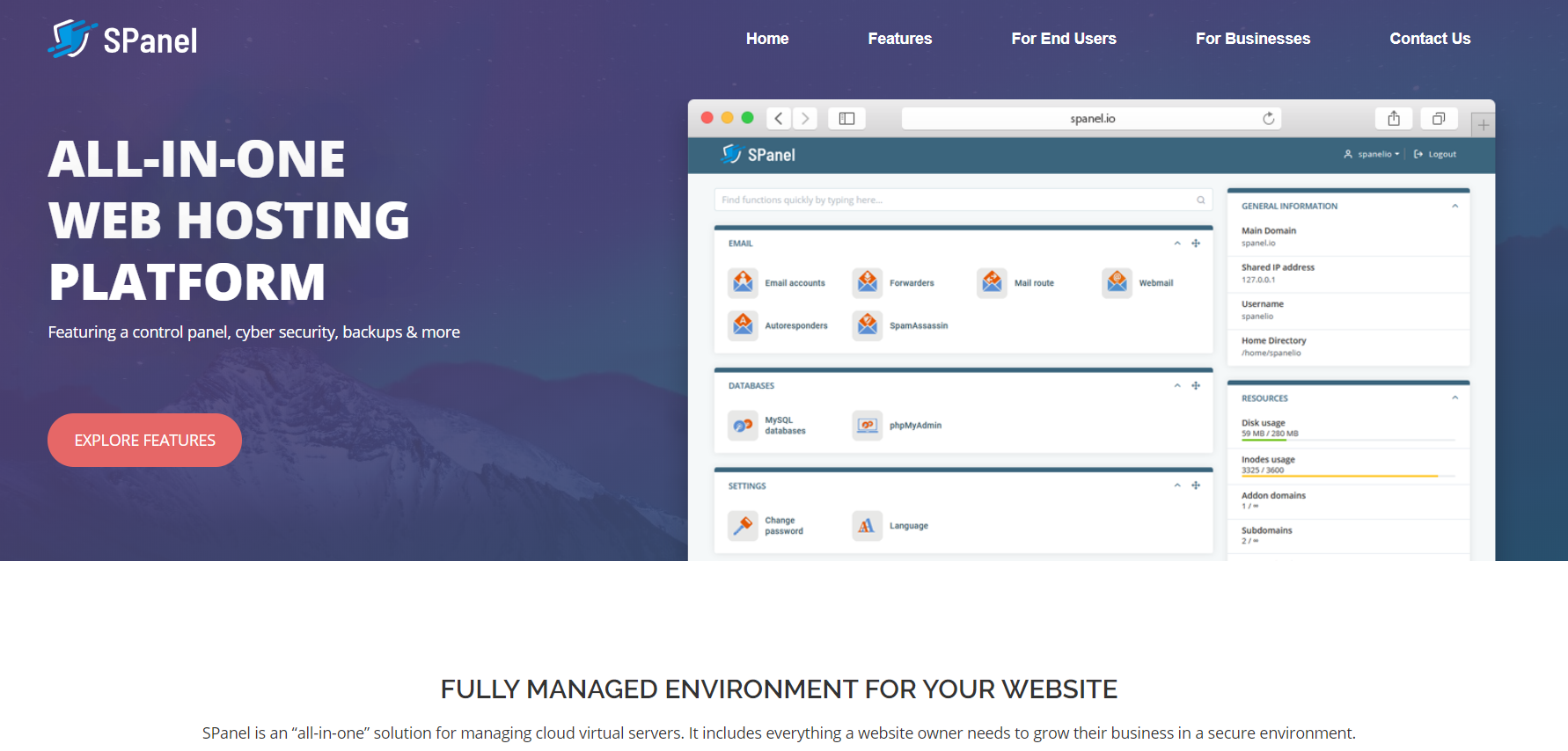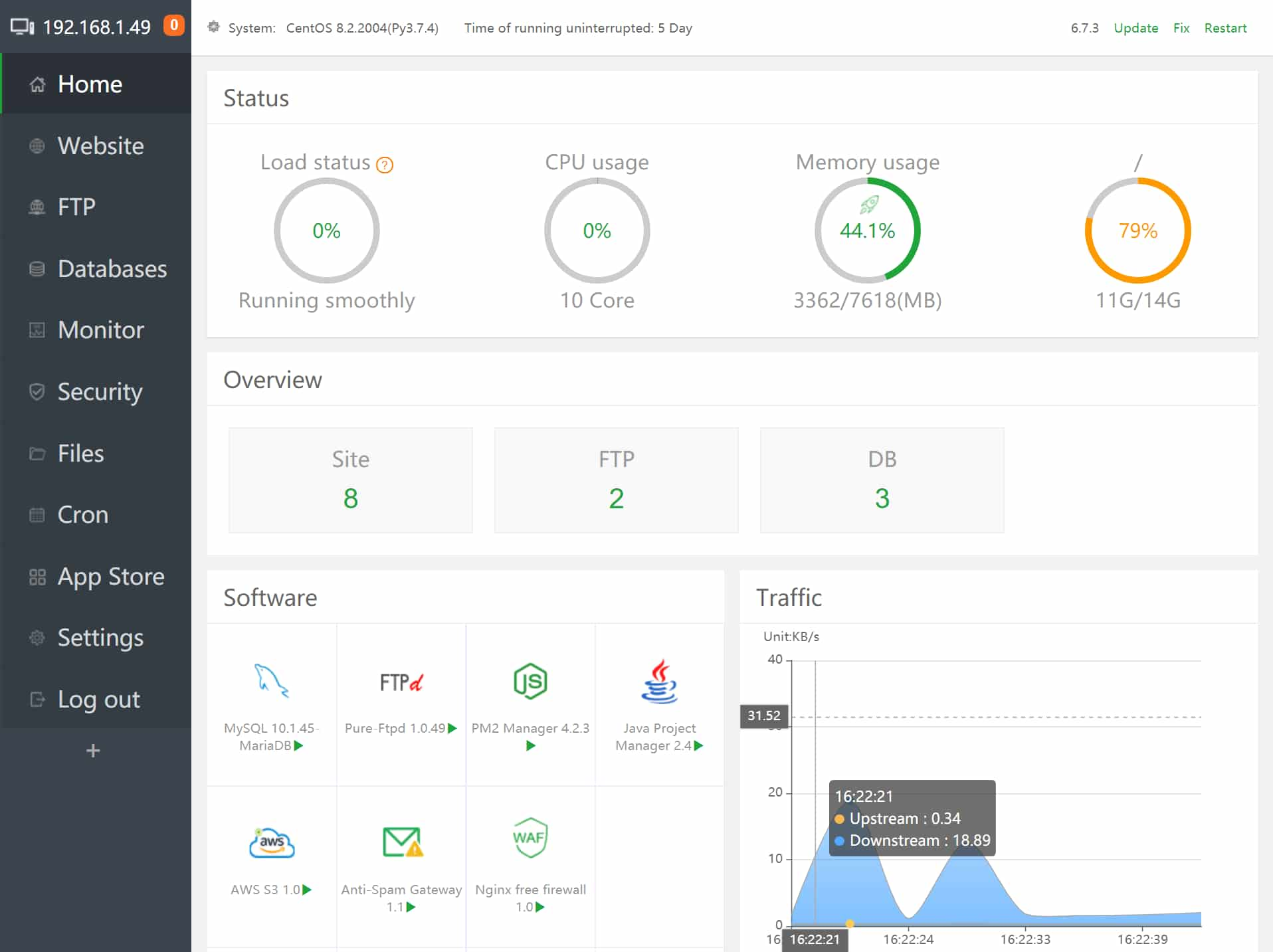

Unlike most of the panels, Virtualmin is mobile-ready. Unlike most of the other GUIs, which still require command-line for some functions, Virtualmin contains almost everything you need, so you rarely need to SSH into the server. The “GPL” version is available free of cost, and the “Professional” version (which comes with support) is priced competitively with the other payware panels. It will cause you pain and suffering if you are a noob and has a pretty steep learning curve! Virtualmin Benefits 1. Just beware – this VPS control panel is not for the faint of heart. It’s a stable, and super popular alternative to commercial control panels like cPanel, although Virtualmin also does have a paid version too … Virtualmin was initially released in 2003 which allows you to manage pretty much anything on your server ranging from Apache, NGiNX, PHP, FTP, even emails – without having to login via SSH. You’re forced to ask (or beg) for help in the forum, and the answers may or may not ever come. Although you can buy an official user manual, no other official means of help is available.

No supportįinding technical help can be difficult.


Although guides are available, most are user-submitted and may be outdated or incomplete. It does not come with a one-click auto-installer and is semi-manual. Getting ISPConfig installed and configured on your server can be a difficult task. It allows you to create OpenVZ containers (virtual servers) and set up a virtualized environment. ISPConfig is one of the only open-source control panels that support virtualization technology natively. ISPConfig is very lenient on server resources, and unneeded service can be disabled to conserve resources (email, DNS, FTP, etc), allowing it to run on very low-RAM servers. Like DirectAdmin, and unlike cPanel and Plesk, ISPConfig can be used with a wide range of Linux flavors. As there is no cost involved, ISPConfig has become a tempting prospect for individual bloggers, website owners, and small businesses. ISPConfig can be downloaded and used for free. Like magix, your new hosting panel can control all of those elements easily and with a very good interface.
#CPANEL FREE ALTERNATIVE INSTALL#
When you install all of those things and configure them, then, on the top of that, you install ISPconfig. Ruby, proftp, courier, postfix, mailman, fail2ban… The list is almost endless. Squirrel mail, Roundcube or whatever you want for webmail. Clamav, spamassassign or any antivirus and antispam system you want. And, when I say prepare, I mean install all elements that you need for hosting: Apache or Nginx, Mysql or MariaDB (not official, though). The big difference with most of the rest panels, is that you first have to prepare the server yourself. The general takeaway you should have with ISPConfig is this – you build out your server the way you want to, and then use ISPConfig as a sort of GUI to manage what you’ve already built out. To the point where it might be a bit intimidating for noobs.īut have no fear, because, with its extensive documentation and ability to control pretty much all server functions, you’ll be able to customize ISPconfig to do exactly what you want. It’s come a long way since then and is super powerful. ISPConfig was created back in 2005 by the German company projektfarm GmbH.


 0 kommentar(er)
0 kommentar(er)
